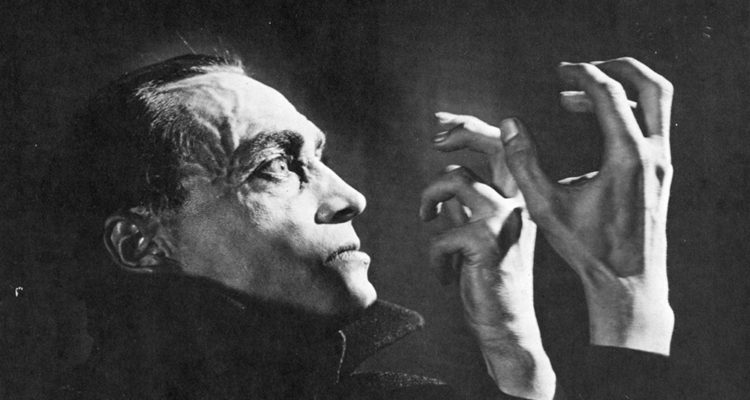O
Orlacs Haende – The Hands of Orlac 1924

The Hands of Orlac is a 1924 Austrian silent horror film directed by Robert Wiene (The Cabinet of Dr. Caligari 1920). The movie is based on the novel “Les Mains d’Orlac” by Maurice Renard and is known for its early exploration of psychological horror themes.
It is the story of Paul Orlac ( Conrad Veidt), a renowned concert pianist who experiences a tragic accident. During a train crash, Orlac’s hands are severely injured and must be amputated. His wife Yvonne (Alexandra Sorina) is devastated by the accident but is relieved when Dr. Serral (Hans Homma) successfully performs a groundbreaking surgery, transplanting new hands for Orlac.
However, as Orlac recovers, he begins to experience strange and disturbing phenomena and believes something is gravely wrong with his new pair of hands, that they may have belonged to a murderer. Orlac’s mental state deteriorates as he becomes increasingly convinced that the hands are influencing him to commit violent and criminal acts.
Haunted by his newfound fears and paranoia, Orlac’s descent into madness intensifies. He must grapple with the question of whether his hands are truly possessed or if his psychological trauma is driving him to madness.
“The Hands of Orlac” is celebrated for its early exploration of themes related to identity, mental anguish, and the blurred boundaries between reality and the supernatural.
Conrad Veidt’s performance in “The Hands of Orlac” (1924) begins with the physical transformation of his character. After the accident that maims his hands, Veidt effectively conveys Orlac’s torment (One need only see his Gwynplaine in Paul Leni’s expressionist masterpiece The Man Who Laughs 1928), pain, suffering, and vulnerability. His facial expressions and body language convey the anguish and despair of a once-talented pianist who has lost his ability to play. As the film progresses, Veidt masterfully delves into the psychological torment experienced by Orlac. He skillfully manifests the growing paranoia, fear, vulnerability, and confusion as he becomes convinced that his new hands are responsible for a series of murders.
Conrad Veidt was known for his expressive eyes, and in The Hands of Orlac, he uses this distinctive feature to great effect. His eyes communicate Orlac’s inner turmoil drawing the audience into the character’s psychological torture, transcending the medium of sound, it relies heavily on visual storytelling and Veidt’s ironically expressive face and body language.
The story has been adapted as Karl Freund’s 1935 film Mad Love starring Peter Lorre in an over-the-top role as Doctor Gogol and A French-British production The Hands of Orlac 1960 starring Mel Ferrer.